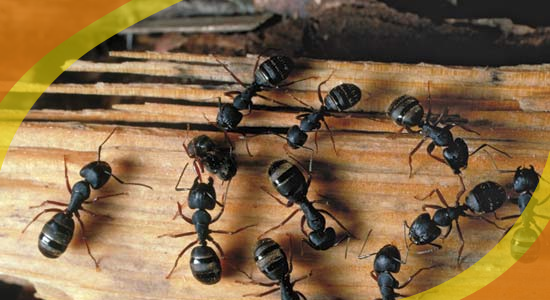 Under the guise of being just a regular ant, the Carpenter ant will stealthily invade your home without you being any the wiser. These wood munching machines are slightly larger in their appearance, and are a high priority for pest control in Canada, as they can cause some serious structural damage to property. Carpenter ant infestations usually occur during the later months of spring and the beginning of fall, as these ants seek out a warm and humid home during the cold winter months. If action is not taken swiftly, these little builders will have no problem expanding and extending their colony and its reach.
Under the guise of being just a regular ant, the Carpenter ant will stealthily invade your home without you being any the wiser. These wood munching machines are slightly larger in their appearance, and are a high priority for pest control in Canada, as they can cause some serious structural damage to property. Carpenter ant infestations usually occur during the later months of spring and the beginning of fall, as these ants seek out a warm and humid home during the cold winter months. If action is not taken swiftly, these little builders will have no problem expanding and extending their colony and its reach.
 Under the guise of being just a regular ant, the Carpenter ant will stealthily invade your home without you being any the wiser. These wood munching machines are slightly larger in their appearance, and are a high priority for pest control in Canada, as they can cause some serious structural damage to property. Carpenter ant infestations usually occur during the later months of spring and the beginning of fall, as these ants seek out a warm and humid home during the cold winter months. If action is not taken swiftly, these little builders will have no problem expanding and extending their colony and its reach.
Under the guise of being just a regular ant, the Carpenter ant will stealthily invade your home without you being any the wiser. These wood munching machines are slightly larger in their appearance, and are a high priority for pest control in Canada, as they can cause some serious structural damage to property. Carpenter ant infestations usually occur during the later months of spring and the beginning of fall, as these ants seek out a warm and humid home during the cold winter months. If action is not taken swiftly, these little builders will have no problem expanding and extending their colony and its reach.

